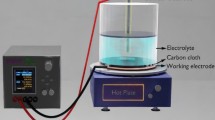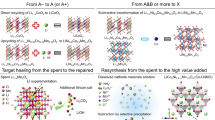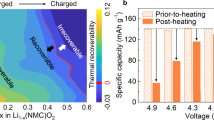Abstract
DURING 1945, in connexion with experiments on thermionic emission from electrodes other than the cathode in small radio valves, we had occasion to make measurements on the quantity of free barium evaporated from the cathode, and also the amount actually adsorbed on or distributed in the barium–strontium oxide coating. In view of the theoretical importance of the latter in connexion with the electrical conductivity of the coating treated as a semi-conductor (investigated by D. A. Wright, whose results are at present in the course of publication), we feel that our results have become of more general interest. Previous measurements by Berdennikowa1 and Clausing2 did not distinguish between the barium in the cathode coating and that evaporated, while Prescott and Morrison3, who made the distinction, used cathodes with free nickel distributed through the coating and activated them in an unusual manner by heating in methane. This may have produced excess barium, which could alloy with the nickel in the coating.
This is a preview of subscription content, access via your institution
Access options
Subscribe to this journal
Receive 51 print issues and online access
$199.00 per year
only $3.90 per issue
Buy this article
- Purchase on SpringerLink
- Instant access to full article PDF
Prices may be subject to local taxes which are calculated during checkout
Similar content being viewed by others
References
Berdennikowa, Phys. Z. Sovjetunion, 2, 77 (1932).
Clausing, "Electron Emission and Adsorption Phenomena", 348 (J. H. De Boer).
Prescott and Morrison, J. Amer. Chem. Soc., 60, 3047 (1938).
Author information
Authors and Affiliations
Rights and permissions
About this article
Cite this article
JENKINS, R., NEWTON, R. Free Barium in and Evaporated from Oxide Cathodes. Nature 163, 572 (1949). https://doi.org/10.1038/163572a0
Issue date:
DOI: https://doi.org/10.1038/163572a0
This article is cited by
-
Hall Effect in Oxide Cathode Coatings
Nature (1949)



